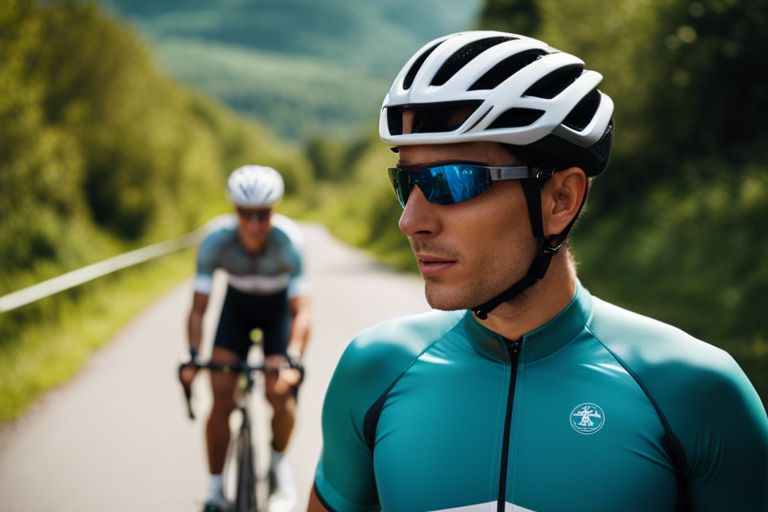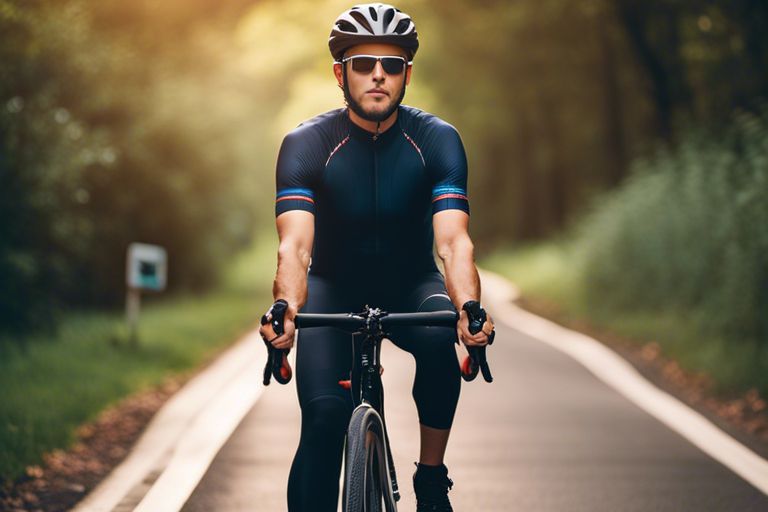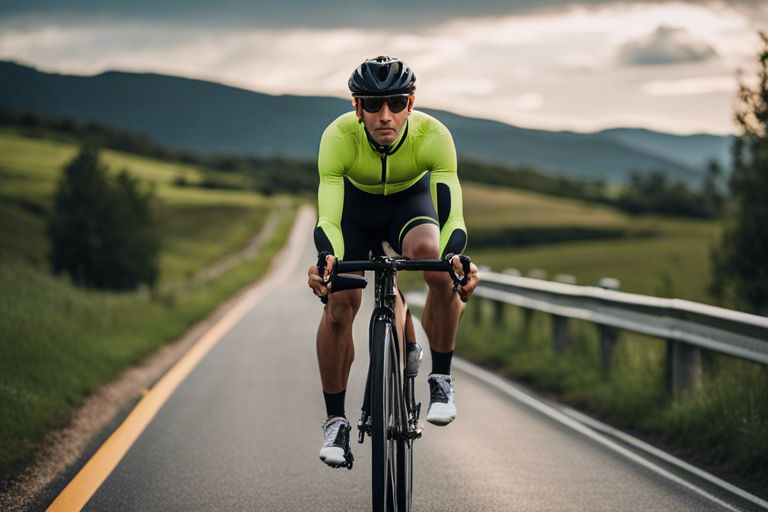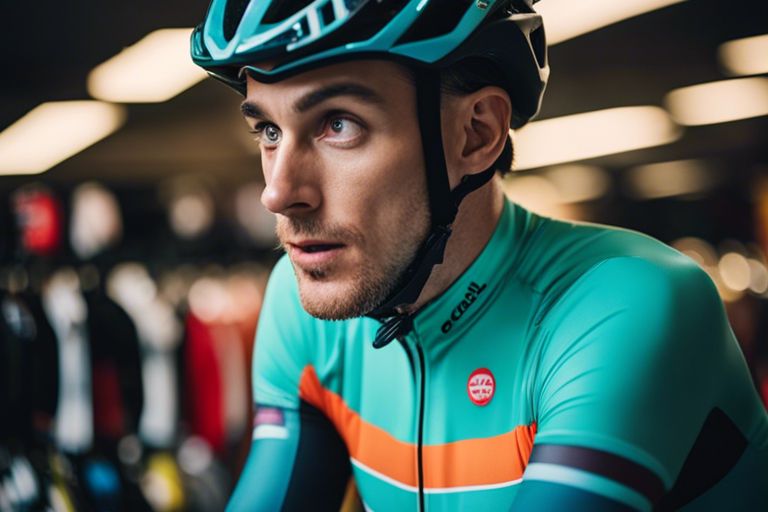Just like any other piece of cycling gear, the fit of your cycling bib can make a world of difference in your comfort and performance on the bike. A poorly fitting bib can cause discomfort, chafing, and even affect your riding efficiency. In this guide, we will walk you through the steps to find the perfect fit for your body type in a cycling bib, ensuring that you can focus on enjoying your ride to the fullest.

Key Takeaways:
- Know your body type: Understanding your body shape and size will help you find the right cycling bib that provides comfort and support during your rides.
- Consider the bib design: Look for bibs with features that cater to your body type, such as high-waisted designs for longer torsos or wider straps for broader shoulders.
- Try different brands and sizes: Don’t be afraid to experiment with various brands and sizes to find the perfect fit that suits your unique body shape and cycling needs.

Understanding Your Body Type
Identifying Key Body Measurements
To find the perfect fit for your body type in a cycling bib, it is crucial to first identify your key body measurements. Take measurements of your waist, hips, inseam, and chest to determine your size accurately. Knowing these measurements will help you choose a bib that fits comfortably and provides the support you need during your rides.
Recognizing Your Shape and Proportions
One crucial aspect of finding the perfect cycling bib is recognizing your shape and proportions. Are you pear-shaped, apple-shaped, or perhaps hourglass-shaped? Understanding your body’s unique proportions will guide you in selecting a bib that complements your silhouette and enhances your cycling experience. Consider how the bib’s design and cut will interact with your curves and contours.
Essential Factors to Consider
There’s no one-size-fits-all solution when it comes to finding the perfect cycling bib for your body type. To ensure a comfortable and efficient ride, there are several key factors to consider before making your purchase:
- Fit and Size
- Material and Fabric
- Chamois Padding and Comfort
- Style and Design
Any of these factors can greatly impact your overall cycling experience, so it’s crucial to pay close attention to each one.
Material and Fabric
Assuming you’ve found a bib that fits properly, the next important factor to consider is the material and fabric it’s made from. Look for breathable fabrics that wick moisture away from your skin to keep you dry and comfortable throughout your ride. Additionally, consider the durability and stretchiness of the fabric to ensure a long-lasting and flexible fit.
Chamois Padding and Comfort
An often overlooked but crucial aspect of a cycling bib is the chamois padding. The chamois is the padded insert in the seat area of the bib that provides cushioning and support during long rides. Plus, choosing a bib with the right chamois for your body type can make a significant difference in preventing chafing and discomfort.
For more information on how tight your bib should be, check out How tight should a bib be? | Road Bike, Cycling Forums.

How To Find the Right Fit
Tips for Trying on Cycling Bibs
All bodies are unique, and finding the perfect cycling bib that suits your body type is crucial for comfort and performance. When trying on cycling bibs, make sure to:
- Take measurements of your waist, hips, and inseam to ensure the bibs will fit properly.
- Try on different sizes and brands to find the right fit for your body shape.
- Check the padding in the chamois for comfort and support during long rides.
Knowing your measurements and trying on different options will help you find the perfect fit for your body type.
Adjusting for Comfort and Performance
An crucial part of wearing cycling bibs is ensuring they are adjusted correctly for optimal comfort and performance. Adjusting the bib straps, chamois position, and leg grippers can make a significant difference in your riding experience. Make sure the bib straps are not too tight or too loose, adjust the chamois so it sits correctly on your sit bones, and ensure the leg grippers are snug but not constricting circulation.
Caring for Your Cycling Bib
Proper Washing and Drying
The key to ensuring the longevity of your cycling bib is proper washing and drying techniques. It is important to follow the manufacturer’s instructions on the care label. Always turn your bib inside out before washing to protect the materials and any sensitive padding.
Longevity and Maintenance Tips
- Regularly check for any signs of wear and tear, such as fraying seams or fading colors, as this may indicate the need for repairs or replacement.
- Avoid using fabric softeners or bleach, as these can break down the materials and decrease the bib’s lifespan.
- Store your cycling bib in a cool, dry place away from direct sunlight to prevent fading and damage to the fabric.
Proper care and maintenance of your cycling bib can significantly extend its lifespan and keep it performing at its best. By following these simple tips, you can ensure that your bib remains in top condition for many rides to come. Recognizing the signs of wear and addressing them promptly can help you avoid more costly repairs or replacements in the future.
For instance
Making sure to wash your bib after each ride, especially if you sweat a lot, can help prevent bacteria buildup and prolong its freshness. Hang drying your bib instead of using a dryer can also help maintain its shape and elasticity over time. Additionally, storing your bib flat or gently folded can prevent unnecessary creasing and stretching of the fabric, preserving its fit and comfort.
- Regularly check for any signs of wear and tear, such as fraying seams or fading colors, as this may indicate the need for repairs or replacement.
- Avoid using fabric softeners or bleach, as these can break down the materials and decrease the bib’s lifespan.
- Store your cycling bib in a cool, dry place away from direct sunlight to prevent fading and damage to the fabric.
Proper care and maintenance of your cycling bib can significantly extend its lifespan and keep it performing at its best. By following these simple tips, you can ensure that your bib remains in top condition for many rides to come. Recognizing the signs of wear and addressing them promptly can help you avoid more costly repairs or replacements in the future.
To wrap up
As a reminder, finding the perfect fit for your body type in a cycling bib is important for a comfortable and enjoyable ride. Remember to consider key factors such as sizing charts, materials, padding, and overall design to ensure optimal performance and comfort. By following these guidelines and taking the time to research and try on different bibs, you will be able to find the ideal fit that works best for your unique body shape and riding style. So, go ahead and get out there with confidence, fully equipped in a cycling bib that is tailored just for you!
FAQ
Q: Why is finding the perfect fit important in a cycling bib?
A: Finding the perfect fit in a cycling bib is crucial as it ensures comfort, performance, and overall enjoyment during your rides. A well-fitting bib will prevent chafing, provide proper support to key muscle groups, and enhance aerodynamics for a smoother cycling experience.
Q: How can I determine the right size for a cycling bib?
A: To find the ideal size for a cycling bib, it is recommended to refer to the manufacturer’s size chart and take accurate measurements of your waist, hips, inseam, and thigh circumference. Additionally, consider trying on different sizes to determine which one offers the best balance of snugness and comfort.
Q: What are some tips for selecting a cycling bib that suits my body type?
A: When choosing a cycling bib for your body type, consider the length of the bib straps, the width of the chamois padding, and the compression level of the fabric. For example, taller riders may benefit from bibs with longer straps, while riders with wider hips may prefer bibs with more stretch in the fabric.




